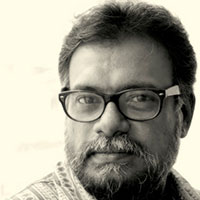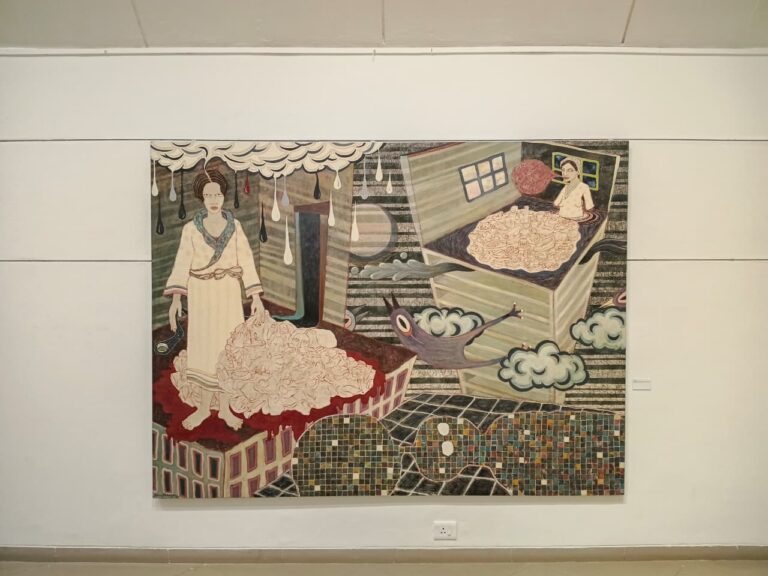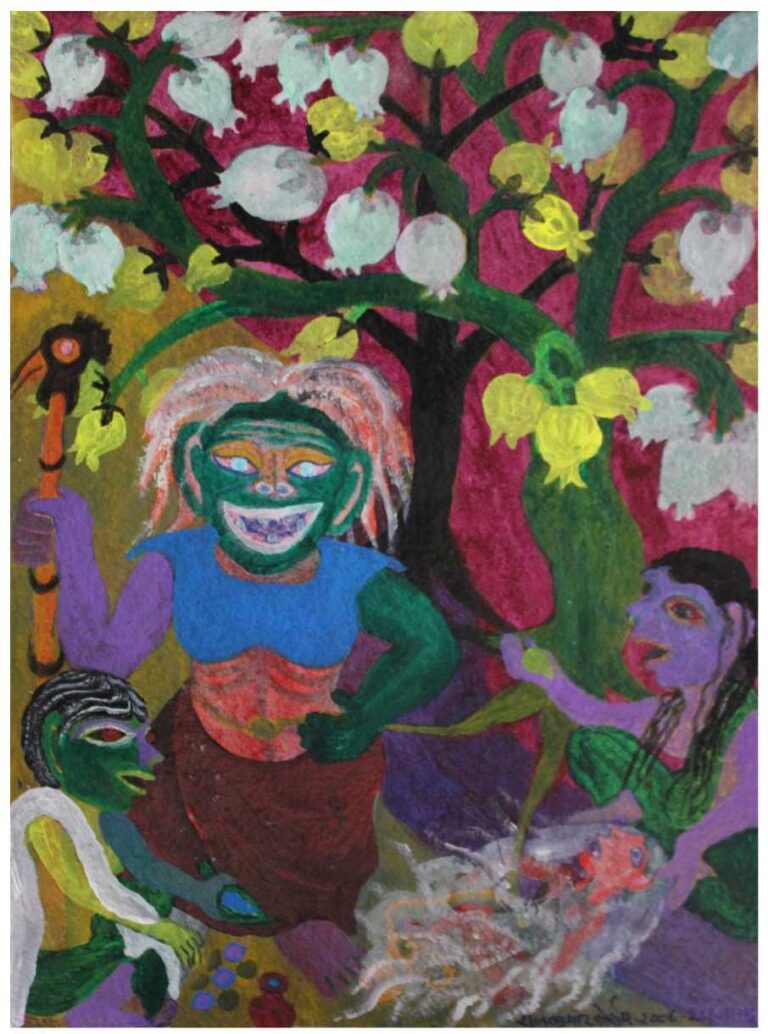Recently, while chatting up with a young student from one of the premier institutes in India, to my surprise she informed me that the professors there discourage the students from qualifying their course as ‘Art History and Criticism’. Instead, they call it ‘Arts and Aesthetics’. Perhaps, time demands such changes in nomenclature and categorisation. However, I am still surprised what could be the outcome of such courses that repudiate ‘Art History and Criticism’ from the frame of reference. What kind of potential roles are these students expected to play when they come out of such institutions after equipping themselves with graduation and post graduation? May be they become museum personalities, archivists, curators, teachers, permanent researchers, teaching assistants, ad hoc lecturers, disillusioned scholars and housewives (housewife is not a derogatory term in my parlance as I believe in their capacity to raise and nurture secret worlds where easy access is denied even to the closest pals).

I am not worried about them at all, except for the initial wonderment. But I am worried about the kind of art criticism and art history that would produce if some of them choose to become ‘critics’ or ‘historians’. Please take note that all the teachers are not critics but all the critics could be teachers. Similarly all the archivists are not historians, but historians are in many ways archivists. Let me go on a bit more; all the history teachers are not historians, but all historians could be good history teachers, if not on a platform at least from the annals of tomes.
So we cannot expect (art) critics from this lot because they are not trained to be ‘critics’. We cannot expect (art) historians from this lot because they are not trained to be ‘historians’. Then, in the long run, what is going to happen to the scene of art criticism in India? In my opinion, in the name of neo-categorisation and specialisation, we would be taking things back to a time when critics were considered to be sycophants and parasites. Let me quote from what Charles Fabri had written in 1960 in Design Magazine, published from Delhi:
“(But, surely), art criticism has a very different part to play, and it is worth our while to examine the problem closely and search ourselves as to whether we have a valuable contribution to make in the world of art. It is a facile conclusion to say that the critic is a useless sycophant, a parasite living on the peripheries of art, and that whilst the creative artist creates, the art critic does nothing of the sort; he hangs around the creative artist, looking for an opening at which he can stab, or feeding himself on the creative artist’s work; a parasite.”
This observation coming from three decades ago throws some very cold water on our sleepy eyes. If not, it should. When we wake up we see, though dazed a bit, that there was a time when critics were considered really sycophants and parasites. For a long period, it remained to be so. And even today, from certain quarters you see how certain critics give away words of blessing in the form of new paper articles, catalogue writings and so on. This kind of ‘blessings by words’ were one reason for the general notion that critics were just sycophants and parasites.
But art criticism is no longer soothsaying. Art criticism, as it is a discipline in itself, has shown the guts to stand on its own while accepting multi-disciplinary approaches as a part of it. When multi-disciplinary approach was not even considered, the critics were left without any other tool than the autobiographical renditions of the artists. So naturally, biography and autobiography became the starting and ending point. And to add values to it, the critic would put a bit of metaphysics, a bit of formal reading, a bit of social concern here and there. He/she did not have any other choice than depending on the artist, thereby even if unwillingly, accepting the fact that he/she was a sycophant and parasite. But this was a mutual act, a recognised critic of the yester years had the power to ‘bless’ an artist with his words, even when he was not a co-producer of the artist’s work and its meaning.
Today, art criticism is not just about writing about art through a multi-disciplinary perspective. It creates its own rules, it own observations, often depending on the textuality of the given work of art rather than investing all his/her energies on the biography/autobiography of the artist. When, a work of art is present to the public with an acknowledged mediation of a critic, indirectly, the critic becomes the co-producer of a work of art and its values. Any enlightened period in history would show you such examples of fruitful and respectful collaboration between artist and the critic. I am afraid that India is yet to achieve that phase of enlightenment.
When we consider critics as co-producers of meaning, the job of historians becomes much easier for a part of the historicisation is already done by the critic in his/her act of meaning production. For the archivists, the critical discourse generated by the art critic becomes a handy tool in order to classify, record and regulate the information. Criticism, which is informed and elevated, is no longer a parasitic activity; it has become a much respected and debated one in the current days, and I should add amongst a few enlightened individuals and groups in India.
This is against this historical backdrop Nancy Adajania in her article in Khoj Book cites that critics are not just word makers but collaborators in the production of meaning. However, I would say that there is a resistance to this kind of engaging practice from both the artists and the art owning communities. If you ask them whether anything has gone wrong with Indian art, they would say if at all happened so the reason is the pathetic condition of art criticism. We don’t have proper art criticism, they say and repeating this facile statement several times, they themselves start believing in its affected truth value. In fact, in criticism they have found an easy scapegoat. They find in art criticism, therefore critics, as some kind of a witchcraft doll and pinning it down with abrogation and abnegation give them a sense of relief.
Often done by the ones who would like to go with the existing establishmentarian systems and values, this norm of casting art criticism away as something defunct with all faults on earth, this negation of art criticism (as unfashionable stuff) and art critics (as ill omens) has become a norm, which is quite convenient. And this convenience has in turn caused the academies to rename their courses as I mentioned at the outset. Having said that, the danger involved in such practice is that soon we would face a situation where the academies producing only historians, archivists and museum personalities.
And what do they do? With no critical tools in hand (and even if they have a lot in hand, fear of offending the existing establishments would curtail their ability to use them) eventually they would go back to the artist and his biography and auto-biography. There, views going perfectly well with the established ideas and norms. By parroting them for whatever purpose, they would be rendered sycophants and parasites of the artists; would there be any other way left before them?
Before I close, let me conjure up a scenario of darkness. I address all those people who say that all the ills of Indian art scene (they never say what are these ills) are the result of the lack of art criticism here. Let us imagine a situation in which none, none including me, you, critics, literary people, students, teachers, historians, archivists, journalists, bloggers, television journalists, and Facebook activists write anything about art. Not a word on art.
“Let there be art and let there be no word about art.”
It is a hypothetical scene with no art magazines. Writers refuse to write brochures and catalogues. What would be the result?
“My dear friend, this particular phase will be called the Dark Age of Indian Contemporary Art. And no work produced at this time would fetch the value it otherwise would have fetched.”
Is art criticism still sounding shit to you? Then you must be coming from ‘The Planet of Apes’.
Article Courtesy: Design Magazine.














